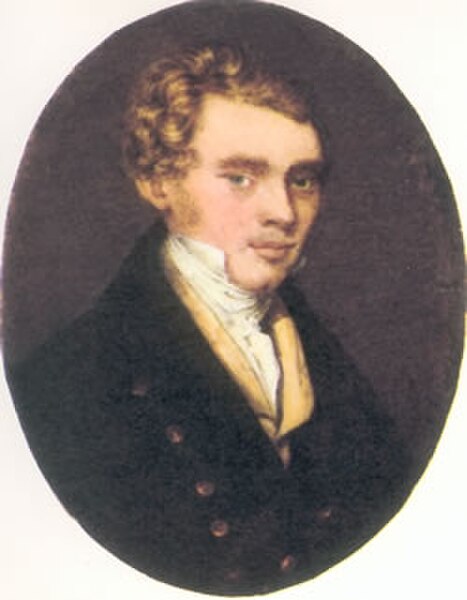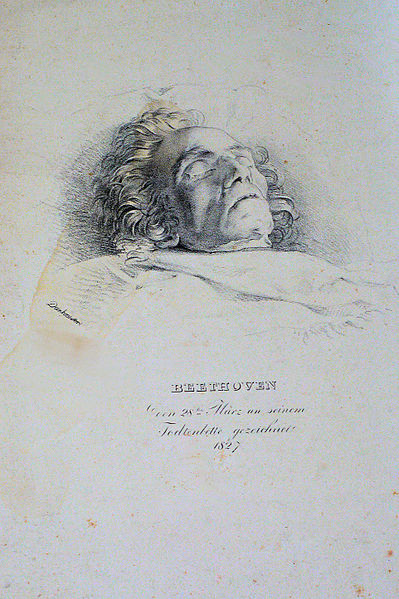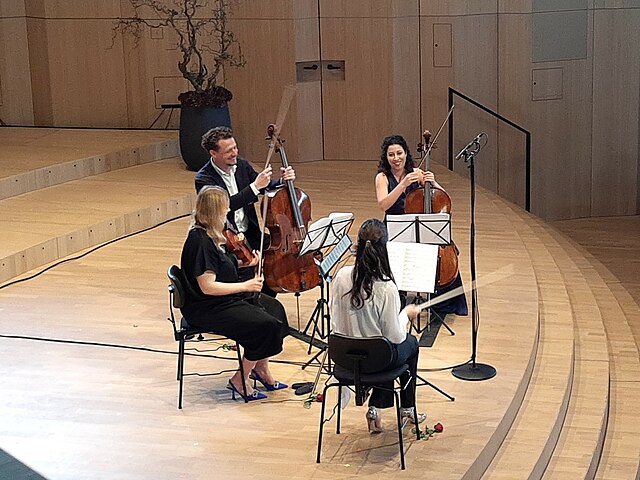The Grosse Fuge, Op. 133, is a single-movement composition for string quartet by Ludwig van Beethoven. An immense double fugue, it was universally condemned by contemporary music critics. A reviewer writing for the Allgemeine musikalische Zeitung in 1826 described the fugue as "incomprehensible, like Chinese" and "a confusion of Babel". However, critical opinion of the work has risen steadily since the early 20th century and it is now considered among Beethoven's greatest achievements. Igor Stravinsky described it as "an absolutely contemporary piece of music that will be contemporary forever".
Title page of the first edition of the Grosse Fuge, published in Vienna by Matthias Artaria in 1827 (in French, with the title Grande Fugue and Beethoven's French name "Louis")
Karl Holz, violinist and confidant of Beethoven in his last years. Holz was second violinist in the Schuppanzigh String Quartet, which debuted the Grosse Fuge. Holz was given the task of convincing Beethoven to publish the fugue independently of the quartet, Op. 130.
Lithograph of Beethoven on his deathbed, by Josef Danhauser
Manuscript of the Grosse Fuge arranged by Beethoven for piano four hands
The term string quartet refers to either a type of musical composition or a group of four people who play them. Many composers from the mid-18th century onwards wrote string quartets. The associated musical ensemble consists of two violinists, a violist, and a cellist. The double bass is almost never used in the ensemble mainly because it would sound too loud and heavy.
The Fitzwilliam Quartet
A string quartet in performance. From left to right: violin 1, violin 2, viola, cello
Joseph Haydn playing in a string quartet
End of Arensky's String Quartet No. 2 for violin, viola and two cellos, played at the Casals Forum in 2023








